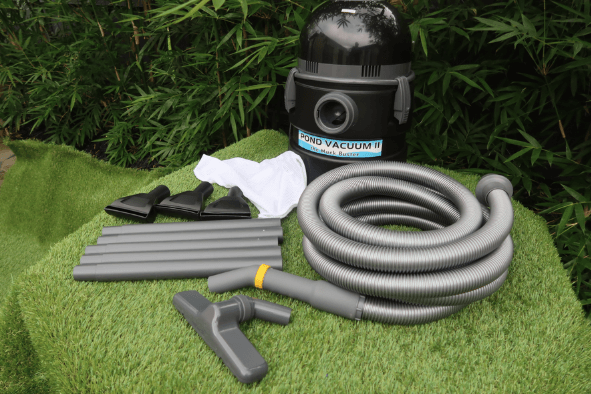The Best Way to Clean Your Swimming Pond? Try a Swimming Pond Hoover

Keeping a swimming pond clean isn’t just about surface-level beauty—it’s about maintaining a safe, healthy, and inviting environment. While your filtration system takes care of circulating and purifying the water, it’s the pond floor where trouble often starts. Leaves, algae, and organic sludge can build up quickly, turning your serene retreat into a murky mess. That’s where the Swimming Pond Hoover comes in. Specially designed for natural swimming ponds, this powerful tool removes unwanted debris without harming aquatic life or plants. Whether you’re doing regular upkeep or tackling a seasonal clean, a Swimming Pond Hoover is your go-to solution for maintaining a crystal-clear pond bottom and a worry-free swimming experience.
What Is a Swimming Pond Hoover?
A swimming pond hoover is a specialized cleaning device designed for maintaining natural or artificial swimming ponds. Unlike standard pool vacuums, a pond hoover is built to deal with organic debris like algae, sludge, fish waste, and fallen leaves while preserving the pond’s ecosystem. It’s the tool of choice for those who value the health, clarity, and safety of their swimming pond.
Swimming ponds differ from chlorinated pools—they mimic natural bodies of water and are often filtered biologically. This means that regular and effective cleaning is essential for maintaining water balance and overall usability. That’s where the swimming pond hoover comes in.
Why You Need a Swimming Pond Hoover
Cleaning a swimming pond by hand is time-consuming and ineffective. Even skimming the surface daily won’t prevent sludge and organic buildup at the bottom. Here’s why a swimming pond hoover is indispensable:
1. Efficient Sediment Removal
Bottom sludge, rotting plant matter, and fish waste can lead to cloudy water and foul smells. A hoover helps remove it all without harming aquatic life.
2. Promotes Healthy Water Balance
By keeping organic matter in check, the hoover helps support healthy bacteria and plant life in the biofilter zone of your pond.
3. Improves Water Clarity
Clear water not only looks better but also ensures safer swimming conditions and improved visibility.
4. Reduces Algae Growth
Nutrient-rich debris is a breeding ground for algae. Regular vacuuming cuts off this food source and prevents overgrowth.
How to Use a Swimming Pond Hoover
Using a swimming pond hoover might seem intimidating at first, but it’s actually quite user-friendly. Here’s a step-by-step guide to help you clean your pond efficiently:
1. Choose the Right Time
The best time to hoover your pond is during warm weather when most of the biological processes are active. Avoid vacuuming in freezing conditions or during fish spawning seasons.
2. Prepare the Hoover
Connect the appropriate hose and nozzle for your pond size and type of debris. Make sure your unit is rated for water depth and suction strength.
3. Start from the Shallow End
Begin vacuuming from the shallowest section and work your way toward the deeper areas. This prevents re-suspending dirt in clean sections.
4. Use Gentle Movements
Avoid stirring up too much sediment. Move the hoover slowly across the bottom of the pond to capture debris without disturbing the ecosystem.
5. Monitor Water Flow and Discharge
Ensure the discharge hose directs dirty water either into your garden or a waste tank. Some hoovers come with a filtration bag to return clean water to the pond.
Which Swimming Pond Hoover Is Best for You?
There are many hoovers available, each suited for different pond sizes, budgets, and cleaning needs. Here are the main types:
1. Manual Pond Hoovers
- Best for small ponds
- Budget-friendly
- Requires physical effort
- Suitable for light debris
2. Electric Pond Vacuums
- Ideal for medium to large ponds
- Automated suction
- Offers deeper cleaning
- Higher price range
3. Dual-Chamber Pond Hoovers
- Continuous operation
- No waiting for chamber to empty
- Perfect for large ponds or commercial setups
When choosing a hoover, consider:
- Pond size (surface area and depth)
- Type of debris
- Hose length and suction power
- Ease of use and maintenance
Who Benefits Most from Using a Swimming Pond Hoover?
Swimming pond hoovers are not just for large estates or botanical gardens. They’re beneficial for:
- Homeowners with backyard natural pools or bio-ponds
- Gardeners maintaining ornamental or eco-ponds
- Aquatic landscapers responsible for maintaining client water features
- Eco-conscious individuals avoiding chemicals but still wanting clear, swimmable water
The investment in a swimming pond hoover saves time, improves water quality, and prolongs the lifespan of your pond setup.
Final Thoughts
A swimming pond hoover is more than a luxury—it’s a necessity for anyone serious about maintaining a beautiful, clean, and eco-balanced swimming pond. Whether you own a small plunge pond or a sprawling natural swimming area, investing in the right hoover pays off in water clarity, safety, and the long-term health of your aquatic ecosystem.
Clean water isn’t just a visual delight—it’s also a key factor in a healthy swimming experience. A hoover simplifies this process, providing professional-grade cleaning from the comfort of your backyard.
Clearing Up Confusion
Is a swimming pond hoover safe for fish?
Yes, as long as it’s used gently and designed for pond use. Avoid direct suction on fish or disturbing their habitat.
How often should I use my pond hoover?
It depends on the size and use of your pond. Most swimming ponds benefit from vacuuming once every 2–4 weeks during the active season.
Can I use a regular pool vacuum instead?
No. Pool vacuums are not built for organic pond debris and may damage plant or animal life in the pond.
Does hoovering replace filtration?
No. Your pond’s biofiltration system should always remain active. The hoover is for removing excess debris the filter can’t handle.
Will a pond hoover remove algae?
Yes, but only to an extent. Hoovering removes debris that feeds algae, but for serious outbreaks, you may also need to adjust water balance or shading.


